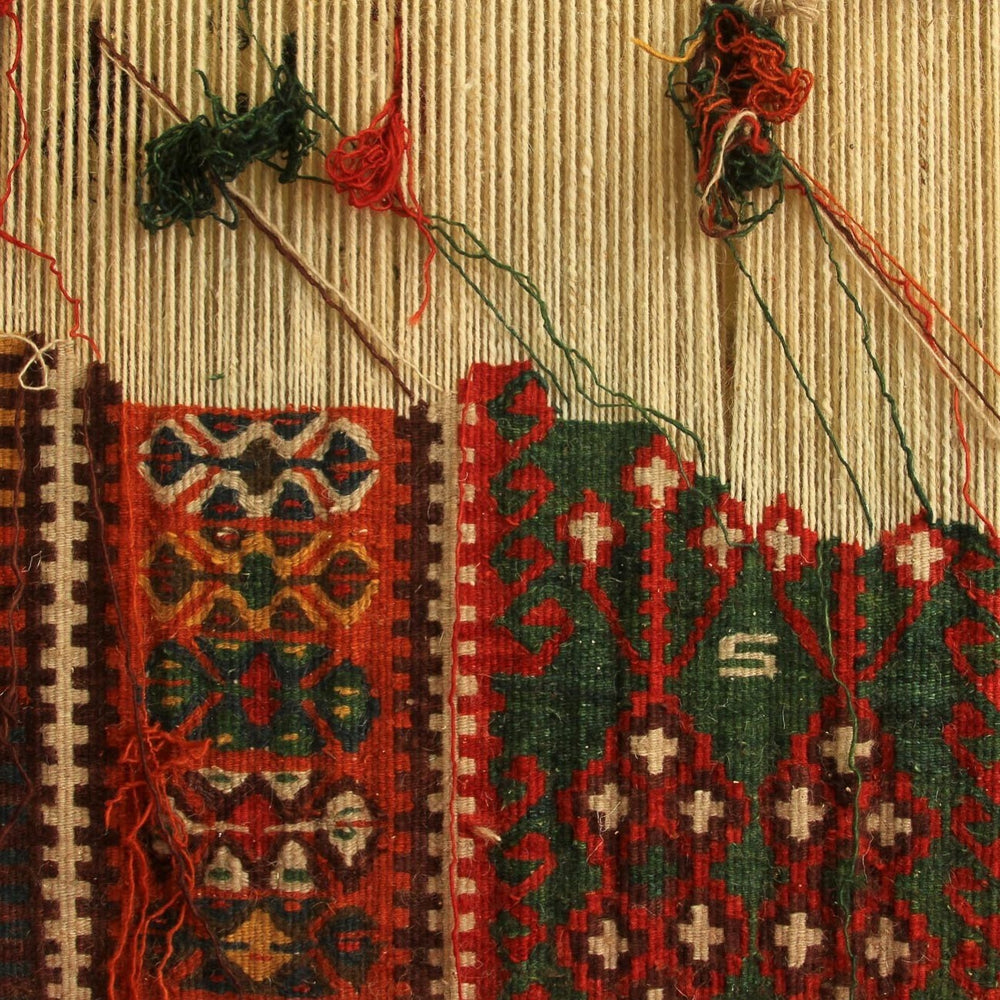



A change in the colour of a rug due to differences in the wool or dye batch. The colour change runs across the rug and is most likely to occur at the top.
A pear-shaped figure often used in oriental rug designs, characteristic of the paisley pattern. The boteh may represent a leaf, bush or a pinecone.
A crochet stitch used in rug construction that consists of successive loops to lock the final weft in place at the end of a rug.
A flatwoven rug from India, usually made of cotton or wool.
A buddhist emblem symbolizing long duration, often used with other symbols.
The part of a rug’s design surrounded by the border. The filed may be blank or contain medallions or an over-all pattern.
A medallion either octagonal or angular in shape, used in Turkoman designs. It is often repeated to form an all-over pattern in the field.
A knot tied over four wraps instead of the usual two.
A tapestry-like woven rug.
The large enclosed portion of a design, usually in the center. Typical shapes are diamonds, octagons and hexagons.
The weaving technique of certain Pakistani and Indian rugs.
The nap of the rug or the tufts remaining after the knotted yarns are clipped.
The simplest interlacing of warp and weft.

A rug with a representation of mosque or arched prayer area. Columns may be shown supporting the arch with a lamp hanging from the arch’s apex.
A flatwoven rug made from a technique that produces a herringbone effect.
Any variety of weaves where the pattern is created by gound wefts that do not run from end to end.
Tied around two adjacent warp threads.
Comprising the structure, parallel warp yarns run the length of the rug and are interlaced with wefts.

The yarns woven horizontally through the warps.
A rug where the weft yarns are more closely spaced than the warps.
A stitch used to overcase and to lock the final weft in the rug ends.